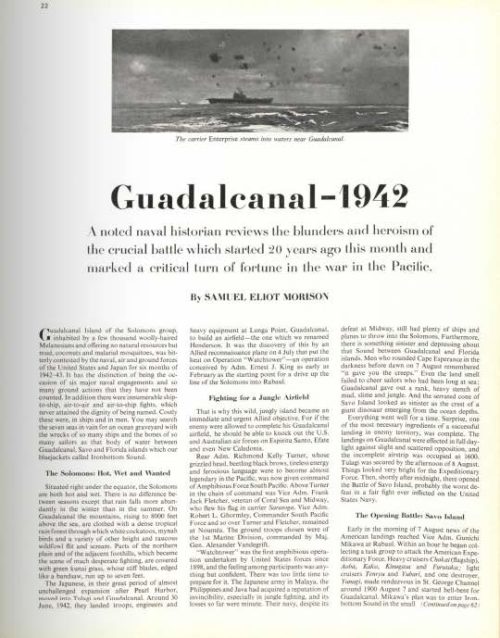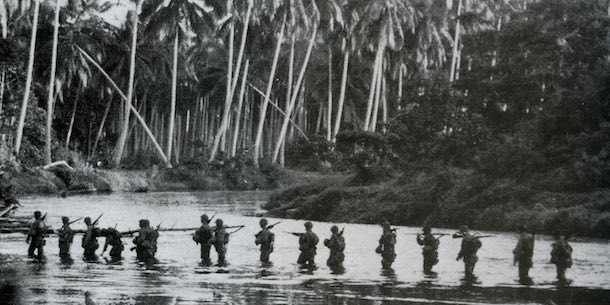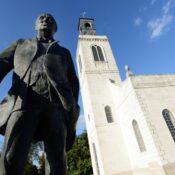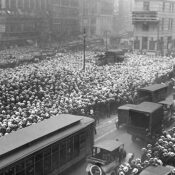Eight months after being attacked at Pearl Harbor, the U.S. finally sent ground forces up against the enemy. The site was a steaming, disease-ridden equatorial island northeast of Australia called Guadalcanal.
The U.S. Navy had already engaged the Japanese at the Battle of Midway and inflicted heavy damage on their navy. Now the Marines and Army troops, along with the Navy, would confront the ground forces of Japan at Guadalcanal.
The Japanese had seized the Solomon Islands in the summer of 1942 and begun building a key airfield on the island. When completed, it would give the Japanese air force control over the shipping lanes between the U.S. and its Australian ally.
Intending to take the airfield from the Japanese, U.S. Marines landed on Guadalcanal on August 7. They met little opposition at first as they marched inland to seize the airfield. But the commander of the assault force grew concerned that he might lose his fighter cover, so he pulled back his supply ships and withdrew, taking away 2,000 men that the Marines were counting on.
Left short of artillery, food, men, and air cover, the Marines remained surrounded by Japanese forces for the next four months. In Washington, there were understandable concerns that Guadalcanal would turn into another Corregidor, where besieged American troops had surrendered to the Japanese.
Over the months that followed, naval and ground forces waged fierce battles for control of the island. The Marines held Henderson Airfield and kept it open for air support despite continual Japanese bombardments and attacks. The Navy fought costly battles that culminated in November with what Admiral Ernest King called “one of the most furious sea battles ever fought.”
In “Guadalcanal — 1942,” Pulitzer Prize–winning historian Samuel Eliot Morison describes the desperate naval engagements that were a crucial part in the victory of this seven-month-long conflict.
Today, the Guadalcanal campaign is memorable for two reasons. First, it was the closest the U.S. came to losing the war in the Pacific, but second, its victory put America on the offensive against Japan for the rest of the war. It was, as Winston Churchill said, “not even the beginning of the end, but it is, perhaps, the end of the beginning.”

Read the Post’s profile of World War II veteran Roy Roush, who fought at Guadalcanal.
Featured image: USMC Archives
Become a Saturday Evening Post member and enjoy unlimited access. Subscribe now




Comments
Descending from Spanish heritages, I always proudly underline that Guadalcanal is the name of a small Andulcian village, home to don Pedro de Ortega y Valencia, one of the valiant sailors that discovered these islands in 1568, sailing thousands of miles without motors, propellers, radios, etc., just a compass and the stars. It is not surprising that the spelling and pronunciation of the name was difficult for both, Americans and Japanese. I have heard of an American folk song that said more or less “I don’t wanna fight and die… in a place they call ‘canal”…